SOULWISE
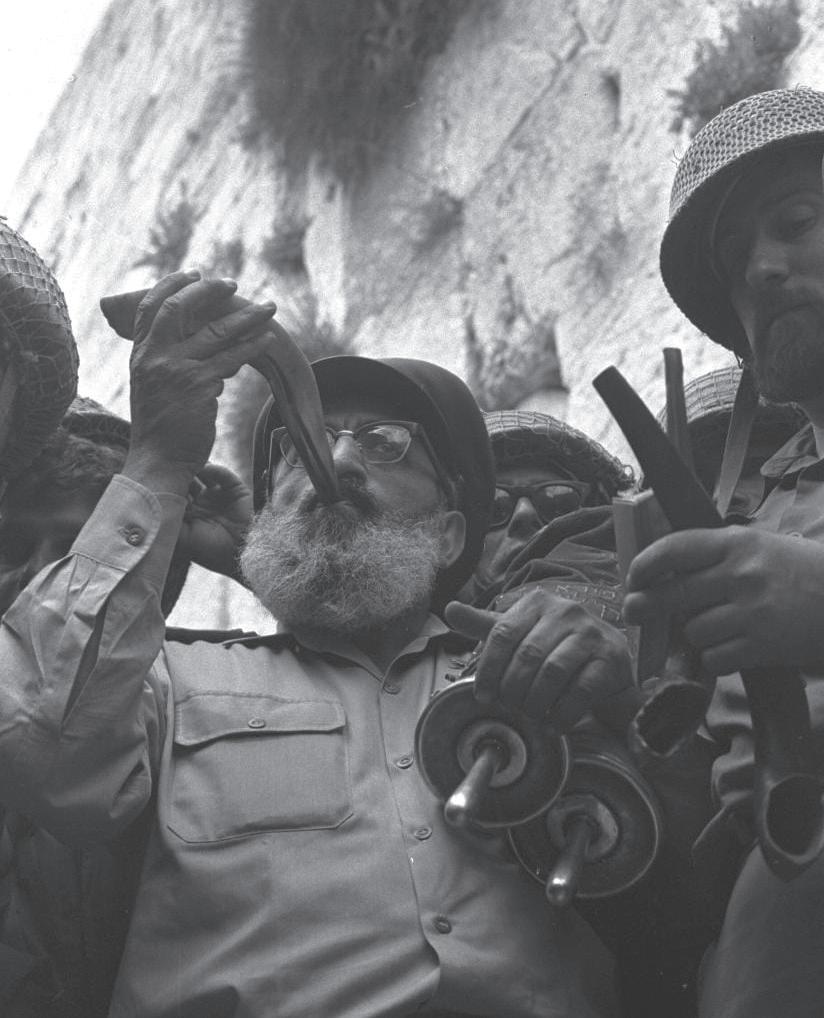
THE HORNS
CELEBRATE HIGH HOLIDAYS AT CHABAD YOUR TOWN SEPTEMBER 22 - OCTOBER 13
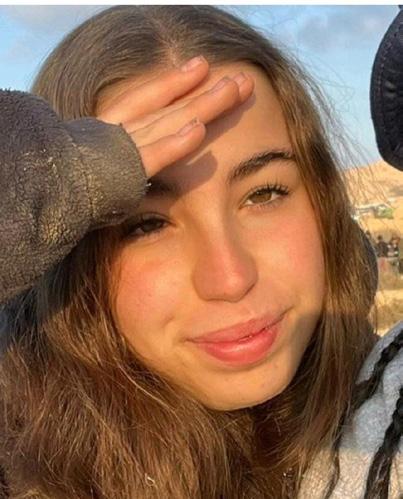

SCAN TO CONNECT:
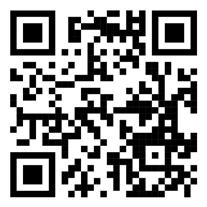
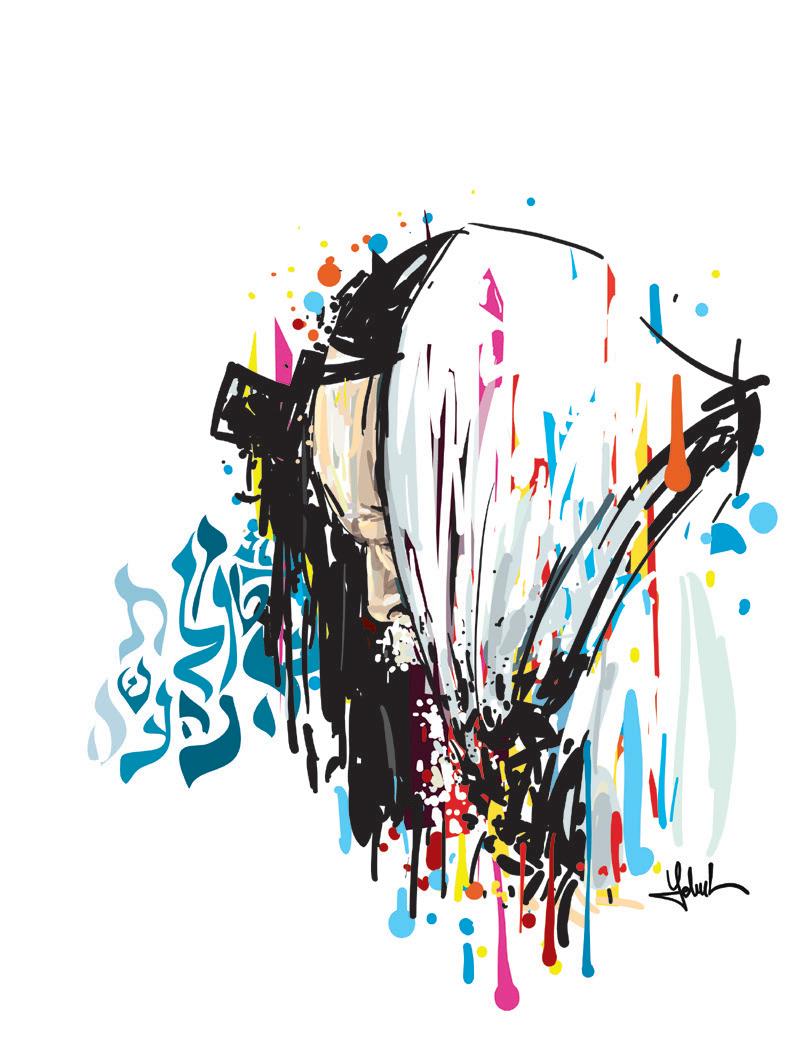
DEDICATED TO
The love and inspiration of
The Lubavitcher Rebbe
Rabbi Menachem Mendel Schneerson, of blessed memory
This magazine is made possible thanks to our sponsors:
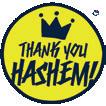

limestonedigital.com

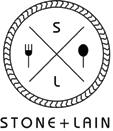

Produced by Chabad of Your Town
P.O BOX 3541
Yourtown, CA 94526
www.chabadofyourtown.com (925) 272-9672
Shana Tova
Dear Readers,
I’m sure you’ll agree that we’ve all changed since last October. This shift, the waking of the sleeping lion of Judah or the October 8th Jew, is felt in community projects worldwide. This magazine is another way of enhancing our community’s Jewish connection and pride. We don’t know why G-d allows terror and hatred to exist, but we do know that we are not afraid, and antisemitism has only brought our people closer together. Historically, when they go dark, we go bright. In times of darkness, we increase our light. That’s why, as Ben Sherman explains in his article “Dancing in October Rain,” we will dance again.
I find it incredible how Moran, who was held hostage for 54 days in Hamas hell, urges our readers for less pity and more light. Moran wants you to dance again.
Our magazine is a treasure trove of inspiration, catering to a diverse range of interests. Whether it’s Abe Foxman’s Simchat Torah in 1945 or Peter Himmelman’s discovery of the power of Shabbat, there’s something for everyone. We hope you find these stories as enriching and inspiring as we do.
Also, please join us for the High Holidays so we can connect as a community and shine our powerful light of Jewish unity, which will ultimately bring complete redemption to the world.
May you and your family be inscribed for a healthy and happy, sweet New Year.
Directors Rabbi & Rebetzin Shaluchim
Editor-in-Chief Bluma Marcus
Editor Rabbi Shmuel Marcus
Design Carasmatic Design; Natalie Mizrahi
Design; SML Design
Rebbe Artwork by Yehuda Lang
Cover by Marc Lumer
Project Manager Jeb Brilliant
Digital Operations Director Zalmy Lieberman
Special Thanks to Shaindel Marcus, Rabbi Levi Friedman, Rabbi Zalman Wolowik, Eli Marcus, Rabbi Winner, Mendel Laine, and Rabbi Chaim Fogelman
©2025 by Soulwise Magazine. All rights reserved, including the right to reproduce any portion of This magazine in any form, without prior written permission from the publisher, except by a reviewer who wishes to quote brief passages.
Rabbi & Rebetzin Shaluchim Directors, Chabad of Your Town
P.S. Please Visit our website for a full listing of our High Holiday schedule and events.
For

MICHAEL BOGART: A TALE OF TWO TRUMPETS
By Ben Sherman
Michael Bogart, a jazz trumpet player, is comfortable performing sold-out Jazz concerts with Tower of Power, and he’s also comfortable blowing shofar for Jews in his neighborhood. You could say the colorful life of Bogart is a tale of two trumpets, and how a Jazz musician found his Jewish soul and created the perfect harmony with his new sound.
Raised in the vibrant cities of Chicago and Michigan, Michael’s early life was steeped in the rhythms of jazz and rock ‘n’ roll. He honed his craft, performing and recording alongside music legends such as Neil Diamond. However, it was during his time stationed in Hong Kong with the U.S. Navy Band that an awakening began. As the sun set on a Friday night, Michael, who thought he was the only Jew in the area, felt an undeniable urge to connect with his heritage. This calling led him to follow a Chasidic man rushing to the synagogue, igniting a spiritual journey that would transform his life.
That Shabbat marked the beginning of many, as Michael immersed himself in Jewish traditions and teachings. His passion for music, once a means of entertainment, evolved into a profound expression of his faith.
In 2022, Michael made the pivotal decision to leave the band Tower of Power, fully embracing his role as a Shabbat observant Jew. His dedication to music continued, but now he only performs on weekdays, spreading joy and inspiration through his melodies. •
GRAB LIFE BY THE HORNS! Based on the teachings of the Rebbe
Did you know that besides the shofar, trumpets also serve as a powerful symbol of Jewish resilience and survival?
The significance of wind instruments in Jewish life dates back to the time when the Jews wandered through the desert. G-d instructed Moses to create two silver trumpets (chatzotzrot). The trumpet’s distinct sound assembled the people or signaled to start the next journey. Beyond their practical use, much like the shofar, the trumpets also held religious meaning, marking sacred festivals and the new moon.
Interestingly, the Hebrew word for trumpets, “Chatzotzrot,” can also be interpreted as “chatzi tzurot,” meaning “half forms.” This term suggests that the trumpets remind us
of our dual nature: body and soul, and that our perceived abilities and talents are just one part of the equation; the other part is G-d. Thus, no matter where Jews find themselves, they have confidence and joy in knowing that we are never alone in facing our challenges.
That’s why, in contemporary times, we see courageous IDF soldiers praying before their missions. These prayers acknowledge our “halfness,” inviting and imploring G-d to complement our efforts.
So, whether you’re dealing with a professional setback, a relationship dilemma, or simply feeling lost amid the chaos of daily life, think of the trumpets. Your journey isn’t a solo, it’s a divine duet.
FROM DARKNESS TO LIGHT
INCREDIBLE FIRST-HAND ACCOUNTS OF RESILIENCE AND FAITH.
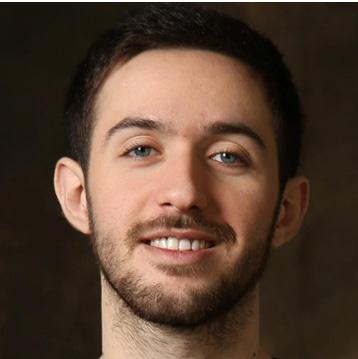
OMER SHEM TOV
Omer Shem Tov had been a secular Israeli, days into his captivity he began to pray. He clung to Psalm 20— “May the L-rd answer you on a day of distress”—a passage that, by eerie coincidence, his mother was reciting back home in Herzliya, unaware her son had adopted the same verse as his mantra. He recalls a miraculous moment when a small bottle of grape juice, used for Kiddush, never ran out or spoiled. He compared it to the Chanukah miracle.
“During my captivity, I felt every prayer you prayed for me, and even in the darkness, I had light.” Omer promised G-d that “If I get home, I’ll pray daily with tefillin.”
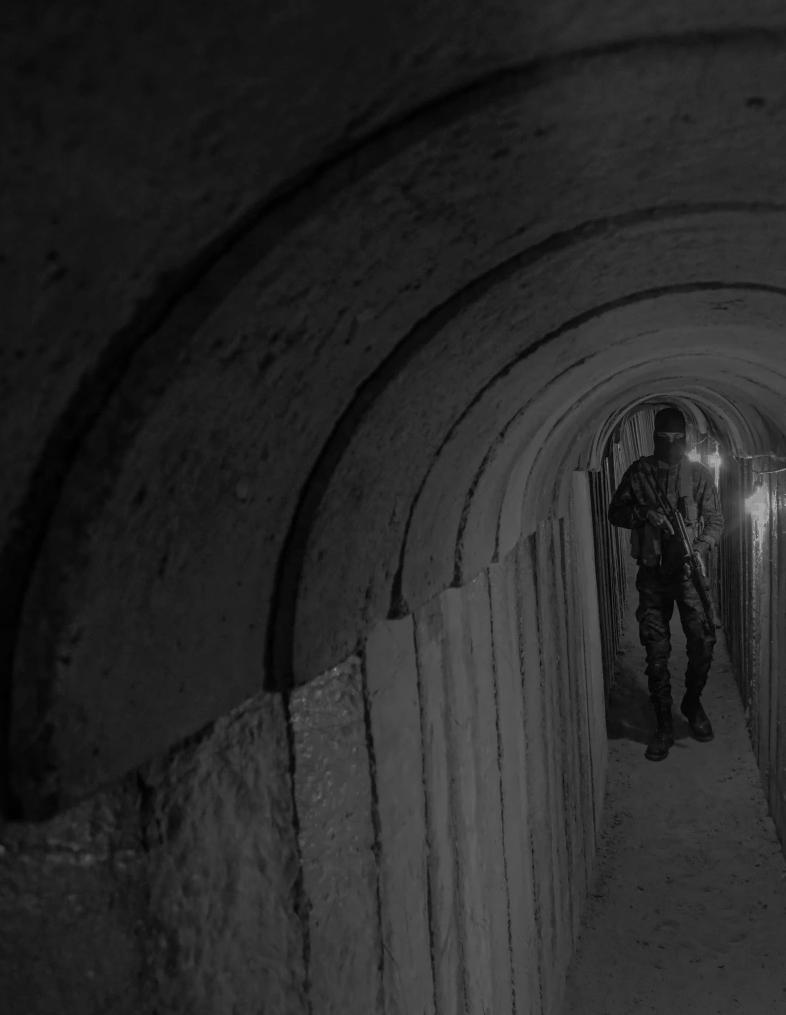
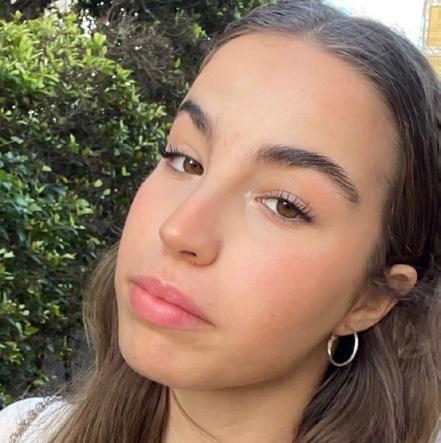
AGAM BERGER
“In those harrowing moments, as I was being kidnapped, I had the freedom to choose what to say. I recited, continuously, the same verse that Jews on the threshold of death have said for millennia: Shema Yisrael...” Berger and fellow hostage Liri Albag, 19, observed Shabbat and Jewish holidays as best they could. They kept track of time by watching TV and listening to the radio.
“For Rosh Hashanah, we requested honey and a carrot, and fasted on Yom Kippur. I observed Shabbat. We missed Chanukah, but on Passover I didn’t eat chametz (leavened food) and asked for cornmeal, and they brought it to me.” Agam also asked her captors for a siddur, a prayer book. One of them laughed at her request, but two days later, he returned with a siddur he had found in Khan Yunis. “Your G-d loves you,” he told her. (The prayer book was likely left behind by an IDF soldier.) Upon her release, she wrote on a dry-erase board: “I chose the path of faith, and by the path of faith, I returned.”
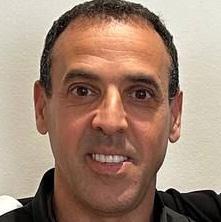
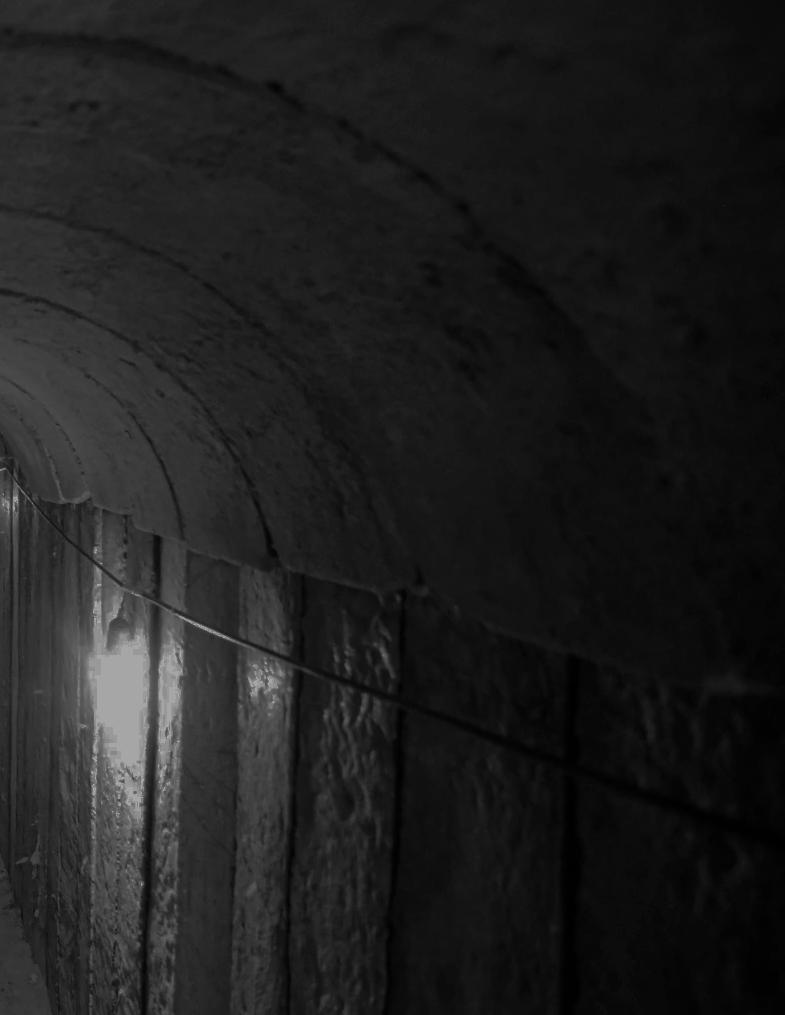
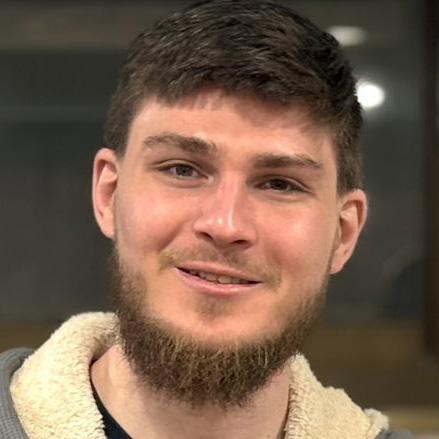
SASHA TROUFANOV
Eli Sharabi survived 491 days in captivity only to learn that his wife and two daughters had been killed. He described reciting the Shema Yisrael prayer each night and attempting to recite the Kiddush over water.
“I’m not a religious person, but from the first day I was kidnapped, every morning I said ‘Shema Yisrael,’ which I had never said in my life. The power of faith is insane. There’s something watching over you.”
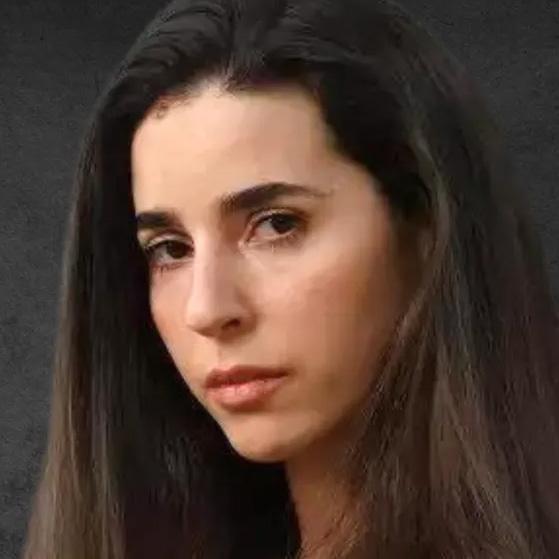
SAPIR COHEN ELI SHARABI
Sapir Cohen saw an Instagram post about the custom of reciting Psalm 27 twice daily, starting the month before Rosh Hashanah and continuing until the day before Simchat Torah. She had begun memorizing the Psalm because she wanted blessings, as she had a premonition, but at the time, she thought it might be related to health issues. During her 55-day captivity in Gaza, she says that Psalm saved her. “I felt miracles. I think one of the biggest miracles I felt was maybe I’m supposed to be in this place, there was a younger captive, and I knew I was there to look after her.”
“The L-rd is my light and my salvation, whom shall I fear. The L-rd is my stronghold, of whom shall I be afraid?” -Psalm 27:1
“So often, just when I was feeling deeply depressed, something would occur that improved my mood, and over time, the understanding gradually settled in me that something beyond my control was influencing me. That’s how I came to believe in G-d, and to understand that not everything is in my control. I want people to thank G-d for what they have. I want whoever reads my words to feel a positive outlook on their own life. When a person feels good in their heart, it’s beneficial for others and their surroundings as well. It radiates.”
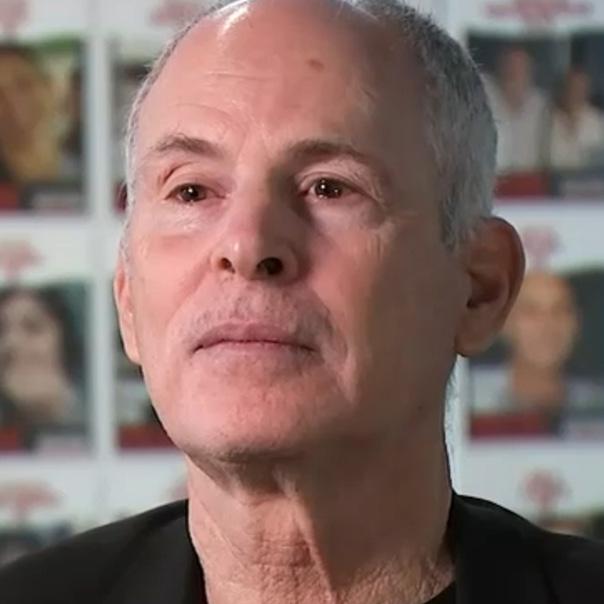
KEITH SEIGEL
“For the first time, I started saying blessings before meals, ‘Blessed are You, L-rd our G-d, King of the universe, who brings forth bread from the earth.’
After every meal, I also recited blessings. I didn’t remember all of them, but I saw someone on TV saying, ‘Bor’e Minei Mezonot.’ Even in the tunnels, I recited the Shema for the first time.” After his release, his daughter asked what he wanted for their first Shabbat meal together. His answer surprised her: “You know what I want most of all? A kippah and a Kiddush cup.”

TORAH & TECHNOLOGY
By Leah Collmer
Gone are the days of needing to walk in a snowstorm or stand at a bus stop in the pouring rain to get to school. Thanks to the internet, WiFi, and interactive video conferencing, your Jewish classroom can be anywhere.
Meet Chanie Hertzel, the fearless principal of Nigri’s Jewish Online School. Enthusiasm, dedication, innovation, and passion are all in her arsenal as the leader of this one-ofa-kind school that brings the joy of Judaism and education to the doorstep of every child. With her dedicated technology team, adaptive programs, and innovative practices, Nigri a WASC accredited Jewish online schools, can follow students wherever they go.
making, latke frying, hamentashen making, and honey cake baking are just a few of the fun activities scheduled to highlight the Jewish holidays. Other activities include “Story Time” at bedtime for the younger kids who show up in their pajamas with a teddy bear and blanket in hand for this cozy, quiet time.
Hertzel maximizes the online or “anywhere” school by offering live field trips in realtime via technology, providing its students with an up-close understanding of the world.
As Jewish learning comes of age, with unprecedented accessibility to remote Jewish communities via the internet, Hertzel and her team are maximizing that potential.
Today’s technology provides students with an up-close HD interactive Torah education, complemented by inclusive extra-curricular activities that are seamlessly integrated into the curriculum. Challah baking, sukkah building, menorah
Hertzel maximizes the online or “anywhere” school by offering live field trips in real-time via technology, providing its students with an up-close understanding of the world. Live field trips to museums, prominent sights in Israel, and notable places to visit are always on the docket.
Similar to online colleges, classes are live, interactive, and engaging, featuring comprehensive multimedia learning. But Hertzel and her staff push for more.
As an example, in Geography class, technology is employed to visit each student’s hometown via Google Maps as part of the curriculum to create conversation and curiosity. No opportunity is missed to create a connection. Classes and screens open early, so students can meet up and chat before class. During break time, screens are left open, allowing students to share and continue conversations.
Moses was the first to use a tablet to download data from a cloud, and today, access to that data is available in the form of an online school as technology continues to propel Judaism into the homes of Jewish
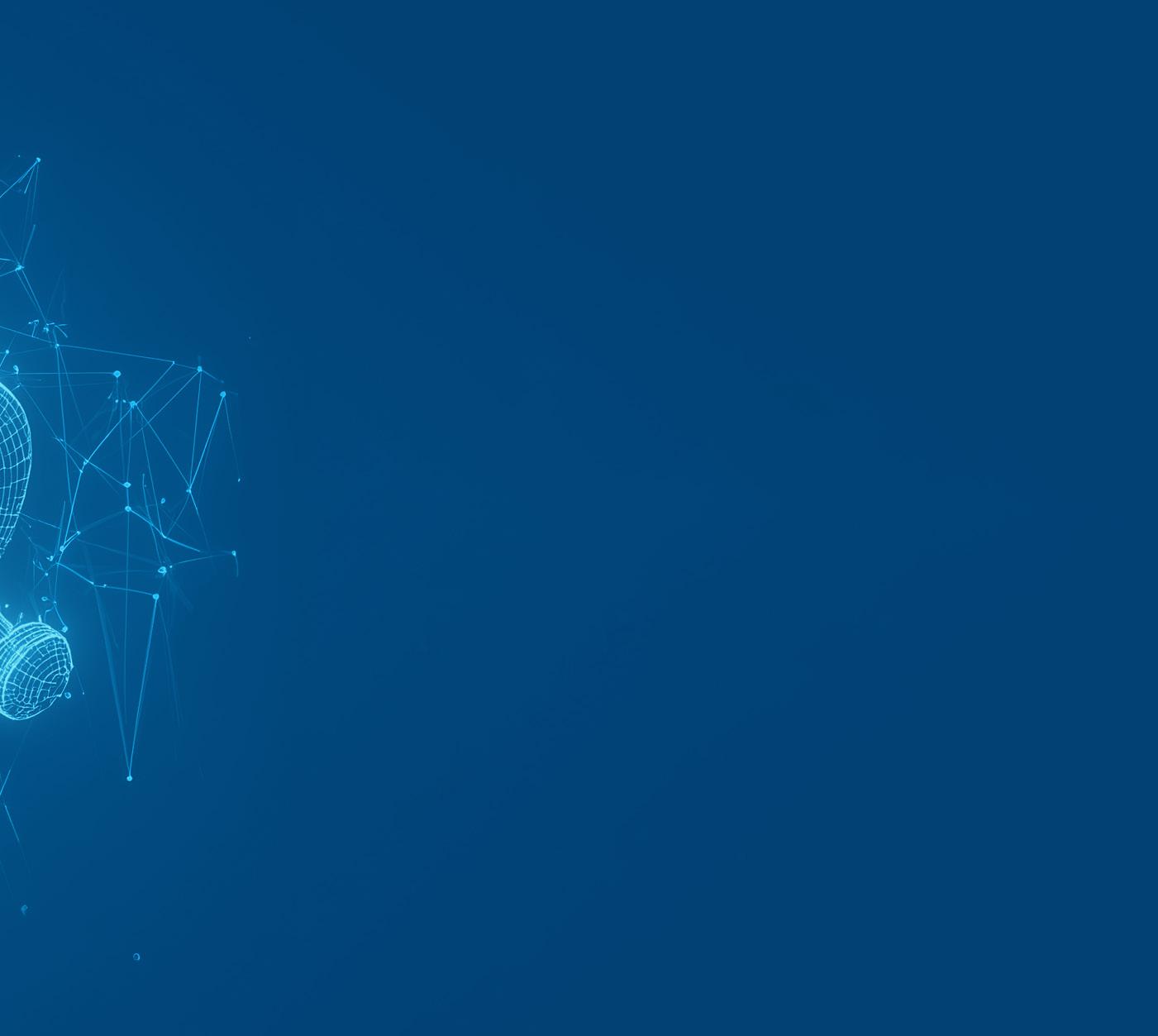
“Kids create real friendships that endure beyond their learning,” states Hetzel. “They invite each other to their bar or bat mitzvah, and fly to each other over summer break.”
Nigri’s 24/6 tech support ensures smooth connection and continuity for all online activities. Their Day School provides a comprehensive Jewish education with classic Judaic classes and optional add-on classes in which students can build their custom schedule. The After School Program offers Jewish essentials, including Hebrew, Reading, Jewish History, and the weekly Torah portion.
Nigri’s Hebrew School is the perfect program to give students an understanding of Jewish history and familiarity with Jewish holidays and lifecycle. At Hebrew School, each child learns the basics of Jewish values and develops a love and pride in their Jewish identity. Nigri’s Bar Mitzvah and Bat Mitzvah Discovery Program is ideal for every Jewish child of age, helping them rise to the occasion and experience this unique rite of passage into adulthood.
In addition to their Immersive Hebrew Language Program, Nigri offers custom tutoring and classes to meet each child’s unique needs.
Tablets and clouds have come a long way since the time of Moses. In this modern era of Torah and technology, Nigri pulls out all the stops for an immersive, vibrant Jewish education tailored for the needs and location of each student. •
>> For more information, visit www.nigrijewishonlineschool.com
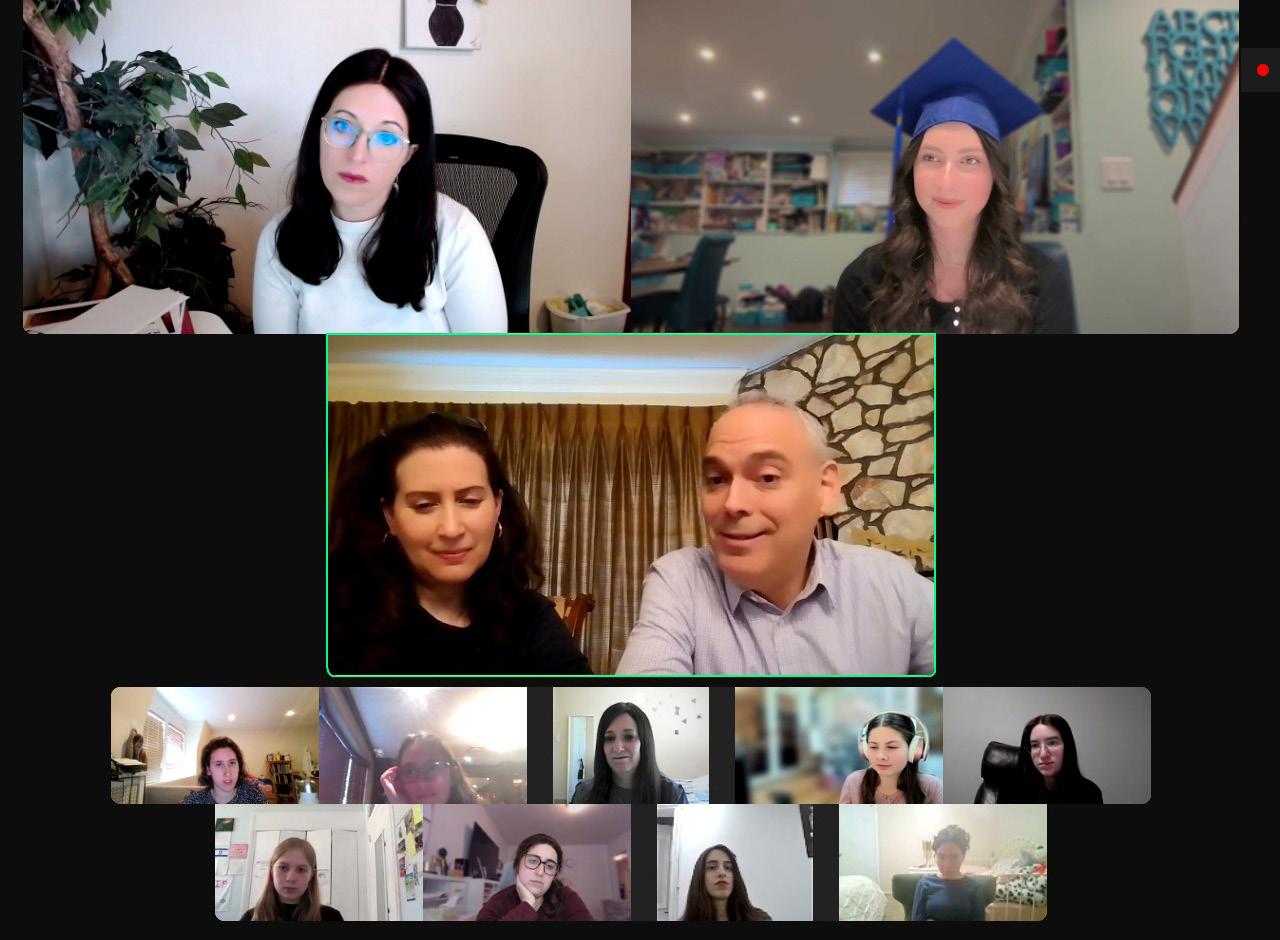
Congratulations to Leora, the first high school graduate from Jewish Online School (JOS), on completing her high school journey entirely through the innovative online program. Leora received a special booklet filled with heartfelt letters and photos, capturing the meaningful moments of her time at JOS. Her dedication and hard work have inspired the entire JOS community, making this milestone not only a personal achievement but a significant moment in the school’s history. Mazal Tov, Leora!
MEET CHANIE HERTZEL
Chanie, a proud native of Crown Heights, had the unique opportunity to grow up within the vibrant community of Brooklyn, drawing inspiration from her proximity to the Rebbe and his deep commitment to Jewish education. Now a dedicated wife and mother, she juggles the joys of parenting children ranging from an energetic five-year-old to a post-seminary young adult, seamlessly integrating her personal and professional passions.
With over 20 years of experience in education, in 2021, during the challenges posed by the Covid-19 pandemic, she stepped into the role of Director of NJOS. Since then, Chanie’s relentless enthusiasm and dedication have propelled her efforts to enhance and expand the school, delivering a top-notch education for Jewish children worldwide.
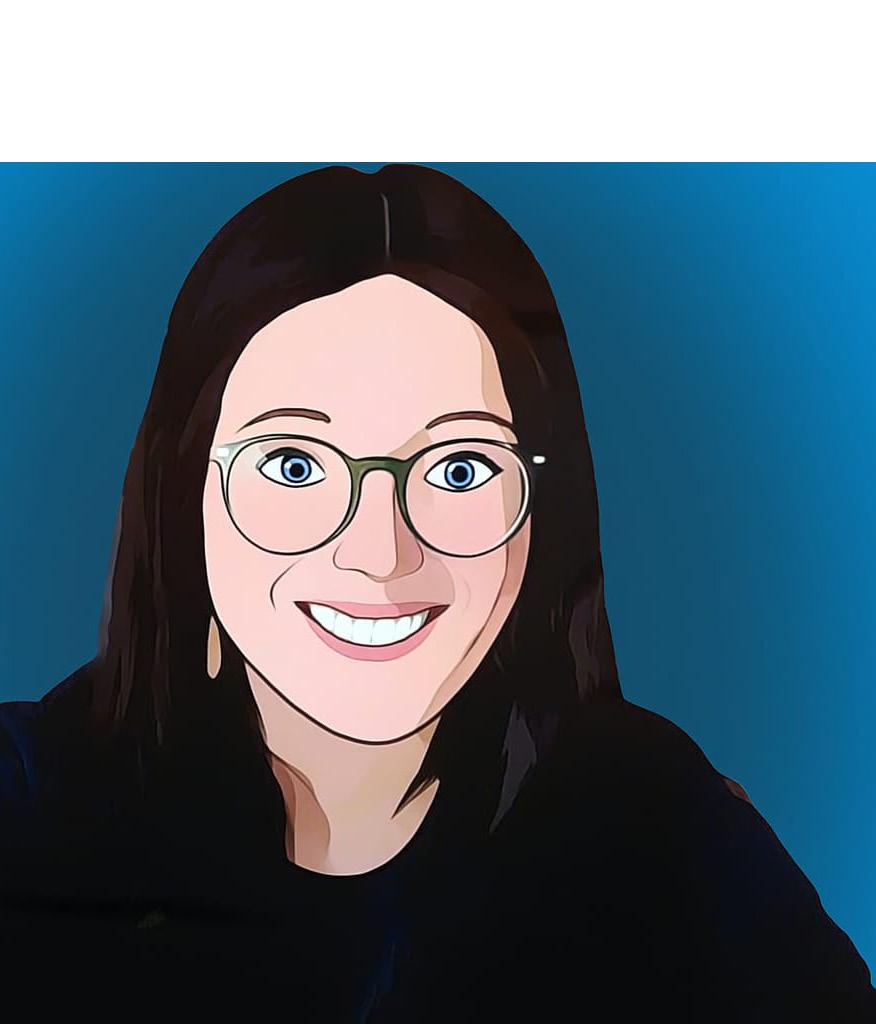

AN OPEN LETTER TO RICKY GERVAIS
By Rabbi Shmuel Marcus
Ricky Gervais is a comedian and an atheist. He jokes about how G-d needed a day of rest after only six days of work. The funny thing is that Chabad’s founder, the author of the Tanya, asked this question over two hundred years ago.
I’ll paraphrase, but imagine you hired G-d to remodel your kitchen. You don’t see heavy machinery or crews putting down painters’ plastic. Instead, G-d says, “Let there be a sink, and a sink appears. “Let there be a faucet,” and a faucet appears. “Let there be a switch for the incinerator,” and the switch appears. Everything is going smoothly until G-d, who hasn’t lifted a finger, says He needs a day of rest.
flying pink elephant playing guitar. Watch what happens when you stop thinking about that elephant; it disappears. It came out of nowhere, so its default position is to disappear back to nowhere.
The Chasidic masters explain that the world around us does exist, but it is like a plane flying through the sky. Yes, it’s flying, but planes can’t fly; they’re flown. The world can’t fly by itself; it’s being
tired muscles. It’s the day your imagined pink elephant understands that her big trunk and thick legs depend entirely on you. Shabbat is our window through the facade of creation and a glimpse into how G-d is the true breadwinner, not us.
If I had Gervais’s email, I’d send him this quick note:
THE MOST CHALLENGING PART OF CREATION IS MAKING YOU THINK YOU EXIST ON YOUR OWN.
It gets more complicated. The first Chabad Rebbe points out the difference between your contractor installing a pre-existing sink from a warehouse and G-d’s sink that appears out of nowhere. The difference is that your contractor can leave, and the sink will stay in your kitchen, but G-d’s sink, which came out of nowhere, needs constant divine creative power to exist, or else it goes right back to nowhere. So, if G-d created the world out of nothing, He can’t stop producing it and, therefore, can’t have a day of rest.
To illustrate this idea of constant creation, imagine something that doesn’t exist, like a
created constantly by G-d. So, G-d can’t take a day of rest from creation; everything would disappear.
Again, I’m paraphrasing, but the first Chabad Rebbe answers that the most challenging part of creation is making you think you exist on your own. So, when G-d says He is taking a day of rest, that’s the “work” he is resting from. He is relaxing the curtain that hides the Divine reality and allows you to think you’re the star of the show.
The Jewish day of rest, the Shabbat, is not a day off for downtime to rest your
Dear Ricky, in response to your joke about G-d needing a vacation, I would like to share with you the Jewish view that all your financial success, humor, and good health come from G-d, but G-d works hard to make you think it’s all you. So, that’s why G-d needs a day of rest, just like every once in a while, you remind your kids that it’s your credit card.
It happened to me. My son took me out for lunch and paid with my credit card. I was perplexed as to who took whom out for lunch. On the one hand, my son made the reservation and invited me to Izzy’s Smoke House, but on the other hand, it went on my card. So, six days a week, you shall be productive and take people out to eat, but on the seventh, you shall rest and remember it’s all from your Father in Heaven’s credit card. •
>>
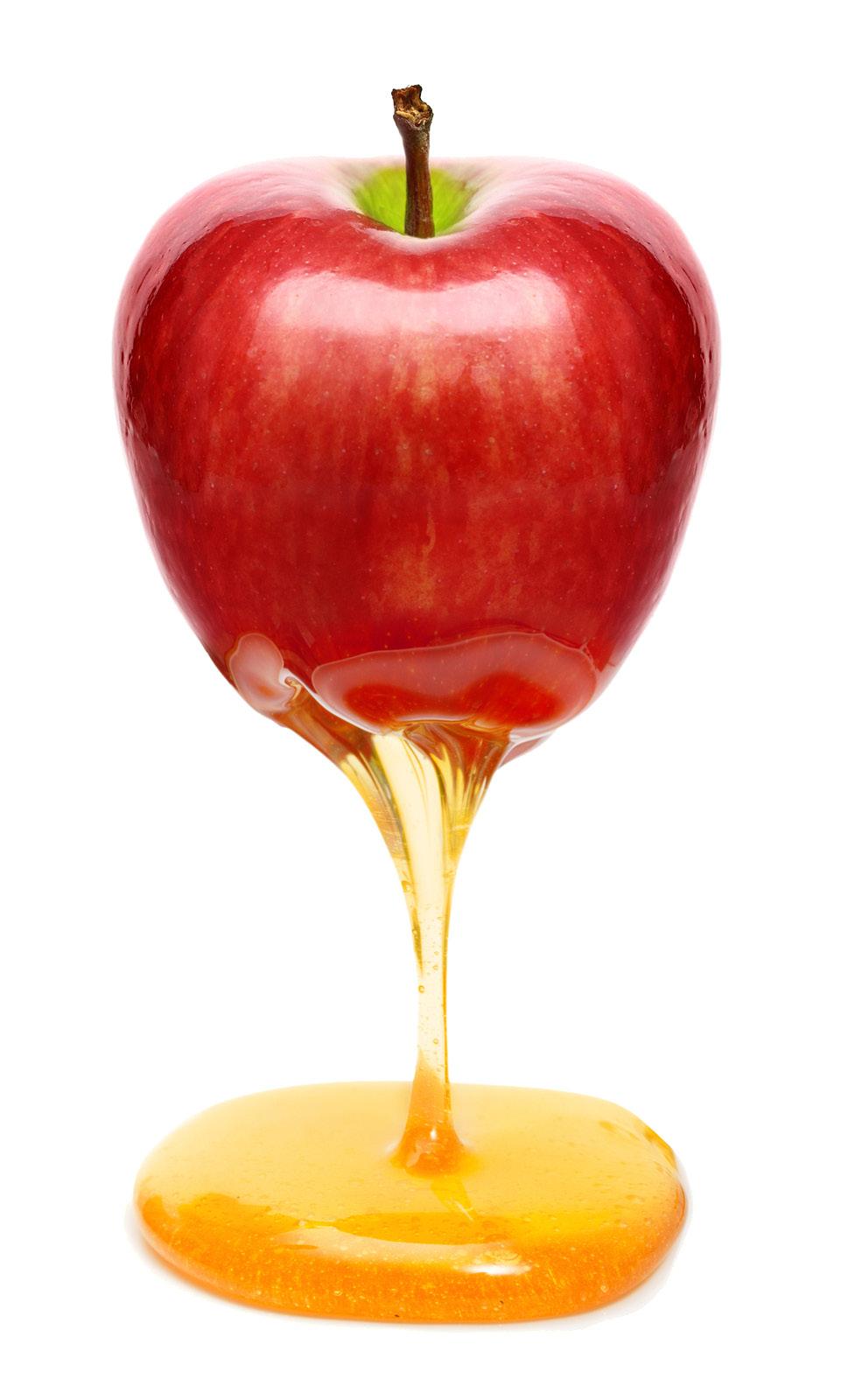
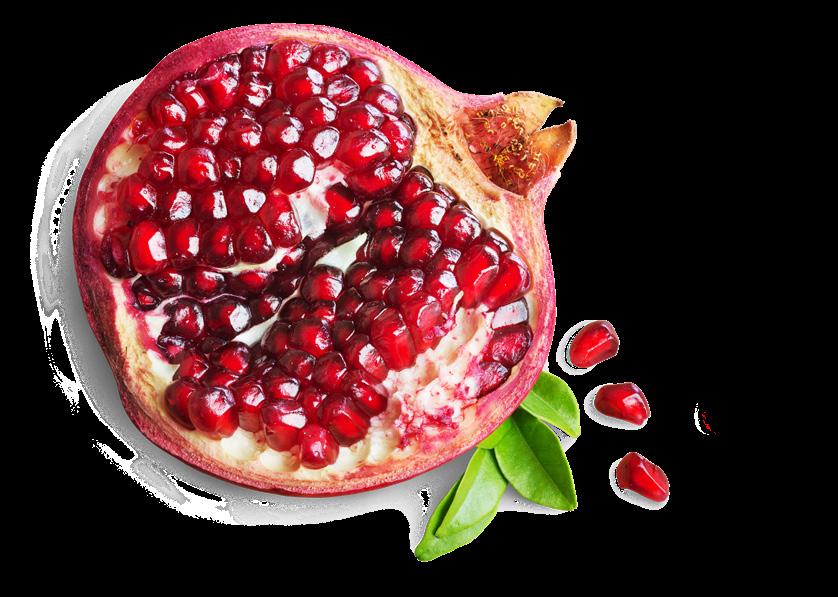
FOODS of the SEASON
By Shira Gold
At every season, Jewish people use different foods as symbols, and it’s not just because we're hungry. There's deep significance in what we eat and how we eat it. But first a word about eating: The simple idea of internalizing the world around us is almost exclusively done with food. When we read a book, the book itself does not get into our blood stream, but we are what we eat. So, now, what are we trying to accomplish by eating the "Foods of the Season"? Here's a few ideas to chew on.
APPLE AND HONEY is by far the most popular Rosh Hashanah food. The reason for this is in its sweetness. As we pray to activate the Divine mercy to grant us a sweet year, we actually eat an apple with honey, as apples derive from Divine mercy, so in a way we are jump starting the processes. The Kabbalistic "Apple Orchard" is a reference to G-d’s compassion.
ROUND CHALLAH BREAD WITH RAISINS
Symbolizing the cycle of the year, the traditional Challah breads are baked in round shapes with added sweetness of raisins or similar. The custom is to dip the challah into honey (instead of salt) on Rosh Hashanah.
HEAD OF FISH indicates our heartfelt prayers that we be from the head of the class this year. Fish are symbol of abundance and the never closing eye. Fish thus represent abundance of blessings to be enjoyed under Heaven’s constant protection over His people.
POMEGRANATE is one of the seven species that the Land of Israel is blessed with. The Talmud relates that every Jew is full of merits as the pomegranate is full of seeds. The pomegranate can thus serve as a reminder that we are all meritorious and should be blessed for a sweet new year.
GOURDS is a fleshy, typically large fruit with a hard skin, and it’s actually mentioned in the Talmud as a Rosh Hashanah food. In Hebrew gourds are “k’rah.” The word means “read out, proclaim” as in “May our merits be proclaimed.” K’rah also means “rip up” as in “May harsh decrees be torn.”
CARROTS are called “merin” in Yiddish which means to multiply. In our efforts to be more productive this year, we eat carrots or "merin", in hopes that its name will serve as a symbol of what’s to come.
BEETS are called “selek” in Hebrew and have the same Hebrew root for siluk which means removal. During the High Holidays we implore G-d to remove all
negative aspects from our lives and beets serve as the sign for our hopes to get rid of our bad habits and start the year on a positive path.
DATES are called “tamri” in Hebrew which means to “end”, as we wish for our problems to end. The date thus symbolizes our prayers that the pain and suffering end and may we live in peace and prosperity.
BLACK-EYED PEAS
Some Egyptian Jews have the tradition of eating black-eyed peas on Rosh Hashanah. Perhaps, this is because they are called “Rubya” in Hebrew, related to the Hebrew word rov meaning a lot or many, indicating our desire for many blessings this season.
STUFFED CABBAGE
is the customary food for Simchat Torah. Just as we dance with a wrapped and closed Torah, we feast with a wrapped and closed dish. Some have said that the rolled stuffed cabbage looks like a scroll, or perhaps we enjoy a cabbage meat dish because of the Hebrew word for cabbage which is karsi, related to the word karet, to cut off or destroy, in our hopes that our physical and spiritual enemies be destroyed so we can begin a year of peace and prosperity. •
>>Shira Gold is a long time contributor to Farbrengen Magazine, Soulwise Magazine, and other Chabad publications. She now lives with her husband and two children in New York City.
THE WORLD’S BEST GUIDE TO A SWEET NEW YEAR
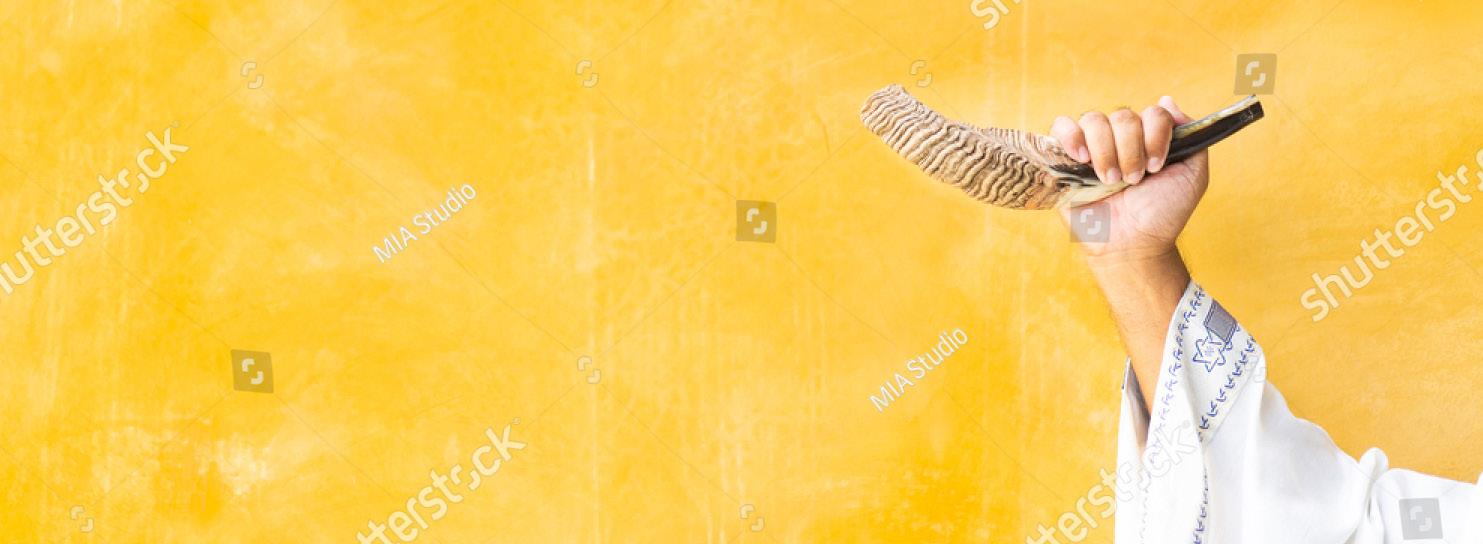
Rosh Hashanah
DEFINITION: Rosh Hashanah (Head of the Year). How your brain impacts your body, Rosh Hashanah affects your year. Also known as Yom Hazikaron (Day of Remembrance), this term is used in prayer, candle lighting, and the Kiddush.
OBSERVANCE:
Shofar. The ram's horn is sounded on both days (unless one day is Shabbat).
CUSTOMARY FOODS:
On the first night, eat an apple dipped in honey for a sweet year. (See blessing in Machzor page 46.) Some display the head of a fish or ram to be the "head of the class." Some eat carrots because in Yiddish, carrots, meren, means to multiply. Pomegranates customarily symbolize our wish to be full of mitzvot, as pomegranates are filled with seeds. On the second night, eat a new fruit to recite the Shehecheyanu. (See Machzor page 46)
Yom Kippur
DEFINITION: Yom Kippur, the holiest day, means "Day of Atonement."
The 5 Don'ts: 1) No food or drink. 2) No washing of the body. 3) No using creams or lotions. 3) No leather footwear. 5) No marital relations.
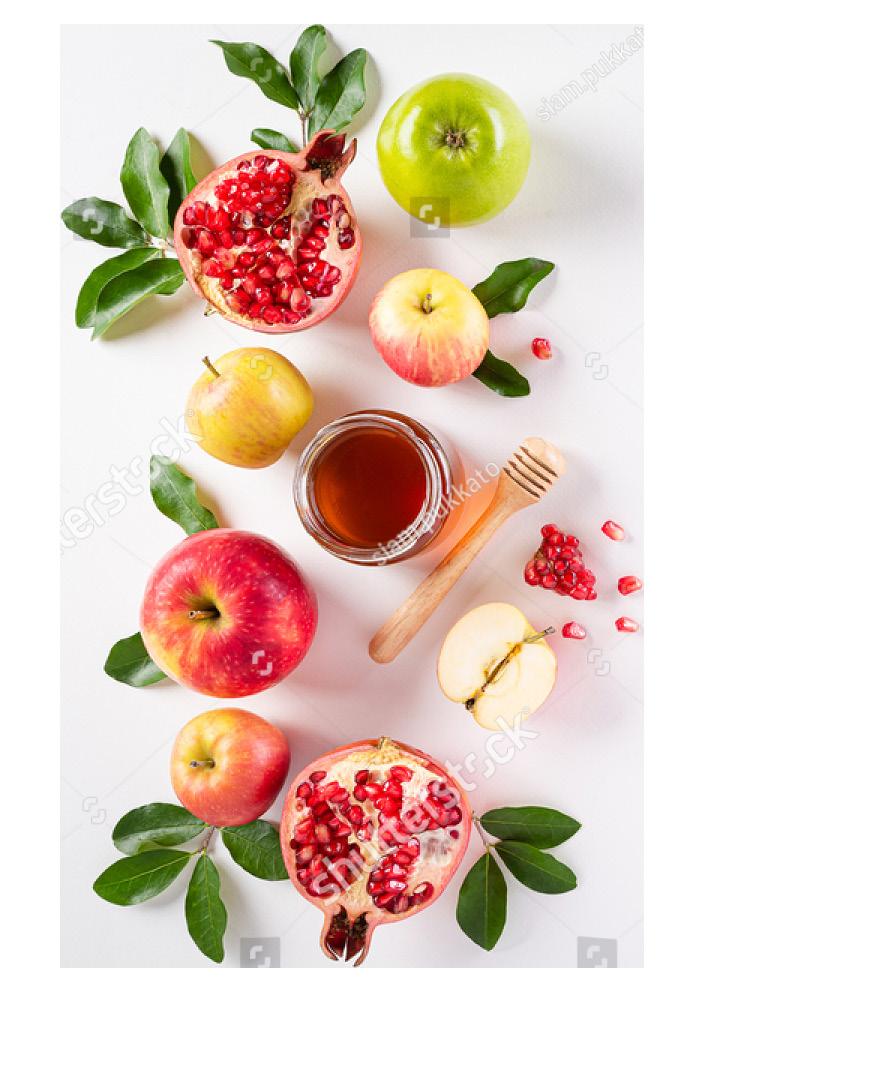
TASHLICH: On the second day, recite the "Tashlich" prayer near a body of water with fish. Water, a symbol of Divine kindness, and the fish's ever-open eyes make this the perfect spot to pray for Divine mercy. (See Machzor page 291.)
Before Yom Kippur Prep: In the morning, take a chicken or money and give it to charity at the Kaparot ceremony. (See Kehot's Machzor for Yom Kippur, page 2.)
Lekach: Request and receive a slice of honey cake, letting this cake be the only thing you beg for this year. Eat a festive meal, immerse in a mikvah, and give extra charity. In the late afternoon, eat a pre-fast meal. Parents bless their children. If applicable, light a memorial candle. Girls and women light candles 18 minutes before sunset.
WHAT TO WEAR: Many wear white as a sign of purity. In addition, men wear a tallit during the Kol Nidrei and Yom Kippur Eve service.
Continued after Holiday Calendar ►
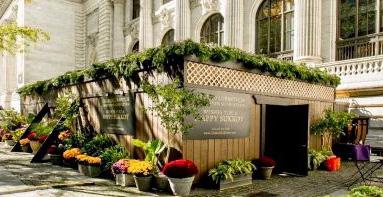
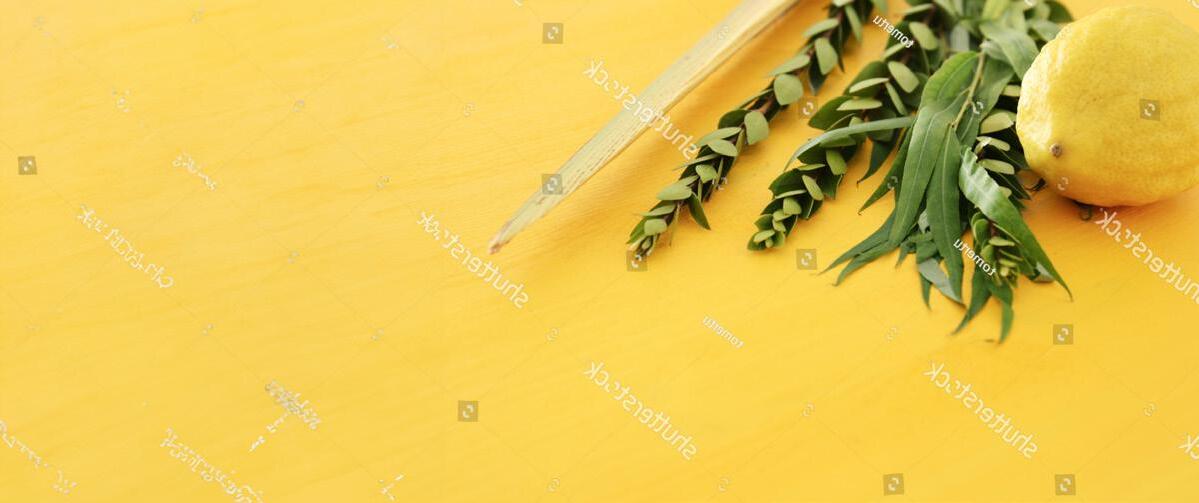
Shemini Atzeret
SWEET NEW YEAR
Sukkot
DEFINITION: Sukkot means "Huts." The Jews enjoyed "clouds of glory" during the Exodus, therefore, G-d commands us to dwell in huts during Sukkot (Tishrei 15-21). ALSO KNOWN AS: Z'man Simchateinu (The Time of Our Rejoicing). All holidays are joyous, yet Sukkot is the only holiday with this title.
OBSERVANCE: Eat all your meals in the Sukkah and regard it as your home.
SHAKE: Take the Four Kinds: a) an Etrog (citron), b) a Lulav (palm frond), c) three Hadassim (myrtle twigs), and d) two Aravot (willow twigs) on each day of the festival (besides Shabbat). For instructions on how to take the Four Kinds or "Shake the Lulav" visit our website.
DEFINITION: Chol
Hamoed (literally, "the weekday of the holiday") refers to the "intermedi ate period" of the festivals (Tishrei 17-20). We eat the Sukkah, shake the Lulav, drink wine, and rejoice, but work is permitted.
DEFINITION: Shemini Atzeret, literally The Eighth (Day) of Restriction (Tishrei 22-23), is a biblical festival that comes after Sukkot; it is a day of unbridled joy, surpassing even the joy of Sukkot.
OBSERVANCE: In the evening service, dance seven Hakafot with the Torah, similar to Simchat Torah. Yizkor: In the morning, the memorial service is recited. It's not Sukkot, but many have the custom of eating and drinking in the Sukkah without reciting the blessing.
CUSTOM: Sometime before sundown, it is customary to go into the Sukkah, have a bite to eat, and "bid farewell" to its holy shade.
ISRAEL VS. DIASPORA: Simchat Torah is the day after Shemini Atzeret in the Diaspora. In Israel, Shemini Atzeret and Simchat Torah are on the same day.
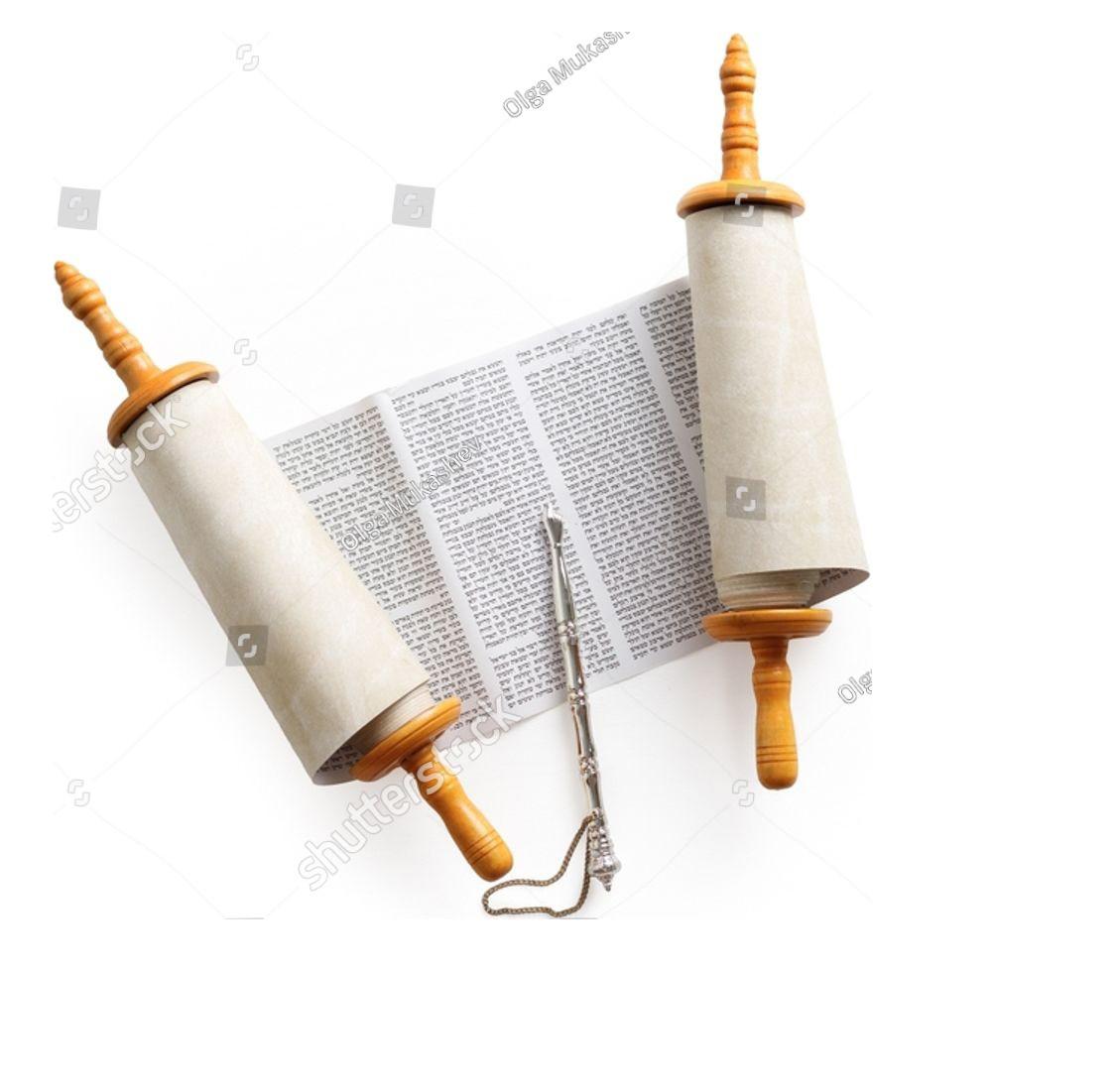
Hoshana Rabbah
DEFINITION: Hoshana Rabbah, "Great Salvation" (Tishrei 21), is the seventh day of Sukkot, which closes the period of Divine judgment. Hakafot: Encircle the Bimah (synagogue reading table) seven times while holding the Four Kinds. Hoshanot: Take a bundle of five willow branches and beat them against the ground after the Hakafot ceremony.
Simchat Torah
DEFINITION: Simchat Torah means the "The Joy of the Torah." It is the most joyous occasion as we celebrate our Divine inheritance and intrinsic connection to the Torah.
OBSERVANCE: Hakafot are held on the eve and the morning of Simchat Torah. We march and dance with the Torah scrolls seven times around the reading table in
SIMCHAT TORAH WAS OUR IDEA.
The Passover Exodus had brought us to Mount Sinai for Shavuot. Still, Moses smashed those first Tablets when he saw the Golden Calf, and only eighty days later, on Yom Kippur, were we forgiven and presented with a new, second set of Tablets. Then, only after Sukkot, was our first opportunity to express our joy and love for the Torah. So we, the Jews, invented Simchat Torah.
While G-d gives us the major biblical festivals, Simchat Torah is our initiative; it's the day we gift G-d a holiday and ask the Torah to dance.
Physically, when you dance with the Torah, you become its dependable legs, and in return, the Torah scroll promises to be your dependable support throughout the year. So, the Rebbe would encourage you to celebrate and dance, to go round and round in circles, so you can lock in the blessings from all sides.
(Based on the teachings of the Rebbe)
Guardians of Destiny A ‘Herstory’ of the Jewish People
Many have waxed poetic about the unlikely survival of the Jewish people. Yet perhaps the answer has been hiding in plain sight: the Eishet Chayil, the Jewish woman.
At every critical juncture of our long and challenging history, you will find the fearless and wise Eishet Chayil, shepherding us towards our destiny.
MOTHERING A NATION
During the Egyptian exile, as despair sets in among the men, the Eishet Chayil remains the master of hope. In the women’s merit, led by Miriam, the Jews are liberated and head to Sinai. There they will receive their mandate, the life manual for the Jewish people and for the entire world.
At Sinai, G-d instructs Moses to speak to the women first. Not only will the Eishet Chayil be the sole determinant in the Jewish status of the children, she will carry Judasim’s foundation—pure and unshakeable faith, upon which all of Torah rests.
When the men donate in a frenzy to build a Golden Calf, the women abstain. Yet they are the first to contribute to building the Tabernacle. They put their heart and soul into making a “dwelling for Divinity” out of the physical realm, a microcosm of the raison d’etre of all existence.
COMING HOME
Poised to enter the Promised Land, the men hesitate and fumble. They accept the pessimistic report of the male spies and
the belief that only in the desert can they remain a spiritual people.
The women reject the pessimism. Their faith is never shaken; and in their view, the material world poses no contradiction to G-dly life.
Sarah, the first Eishet Chayil of our people, identified the Cave of Machpelah in Hebron and encouraged Abraham to buy it. This was the first act of Jewish ownership in the Land of Israel. The women follow
THE ENGINE OF HISTORY IS POWERED BY A FORMIDABLE
FORCE: THE JEWISH WOMAN OF VALOR.
in Sarah’s path, rejecting the report of the spies, and, like the daughters of Tzlafchad, showing great affection for the Land. Unlike the men, the women who left Egypt and danced at the sea merit to enter the Land.
TAKING IT ON THE ROAD
After eight and half centuries in the Land, the Jews are exiled to Babylon, where they face a plot of complete annihilation. A woman named Esther restores their relationship with G-d and facilitates a miraculous rescue.
The Temple is rebuilt and many Jews return to their homeland. When the Greeks oppression begins, the Maccabees rise up.
By Rabbi Yosef B. Marcus
This unlikely uprising is inspired by the women. The heroism of a woman named Yehudit saves the day.
The Second Temple stands for 420 years, and once again the Jews are exiled. For millennia they move about, testifying to the world by their existence, their morality, their holiness, that the world has a Creator, that the world was created with purpose.
YEARNING FOR RETURN
They face persecution and the allure of assimilation. Yet they never forget the promise conveyed by their prophets—the promise of days when nation will not lift sword against nation, when humans will not hunger for bread nor thirst for water, but to hear the sublime words of their Creator.
Throughout this exile, Rachel, buried at the side of the road in Bethlehem, cries on their behalf. Her tears and prayers preserve the inherent unity of the Jewish people. By her merit, they receive a taste of the consolation they will one day receive in full, like drops of water for a parched traveler, enabling them to survive the Exile.
Wherever they wander—from Barcelona to Berlin, from Aleppo to Amsterdam— their eyes and hearts face Jerusalem. At every wedding, they break a glass, declaring their celebration incomplete as long as G-d’s revealed presence has not returned to Jerusalem.
Even in their darkest moments, they declare: “I believe in the coming of Mashiach…I await him, every day...”
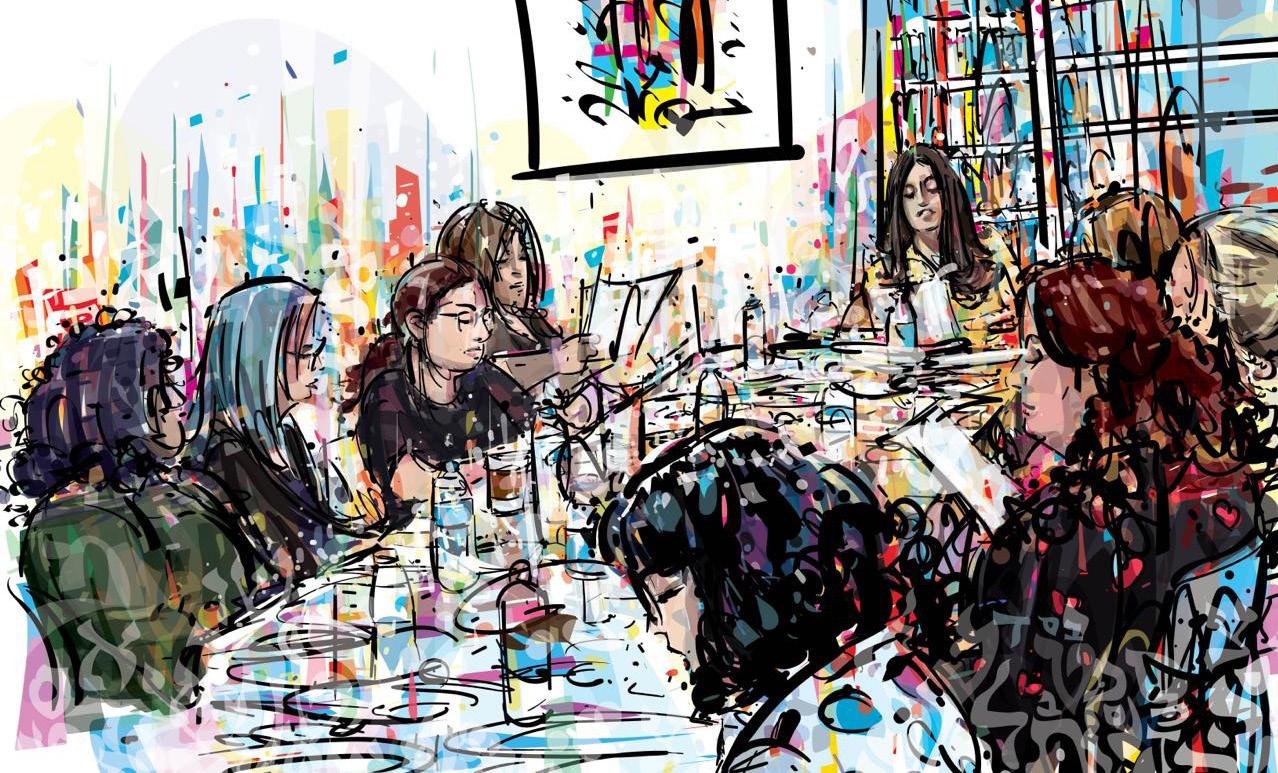
CATALYSTS OF REDEMPTION
And who is the catalyst behind this yearning, the tenacious belief that, despite everything, the world is G-d’s world, and so it must be, at its core, a place of goodness? The Eishet Chayil. And just as the women were first to receive the Torah, so will they be first to receive the sublime Torah insights that will be revealed in that future time. It is then that the inherent spiritual eminence of women will be fully revealed.
•
Just as women lead throughout history, they are at the forefront of the points of light of the Jewish calendar. The rejuvenating spirit of every Shabbat and Yom Tov is ushered in by the women lighting the candles.
Women are also a major feature of the holidays, particularly Pesach, Chanukah, and Purim. Indeed we begin every new year with a Torah reading and haftorah that are about women.
OUR MATRIARCH SARAH
In the reading of Rosh Hashanah, we learn of Sarah’s unbreakable commitment to having a child—her prayers and her seemingly harsh words to Abraham to
elicit his prayers. Because when it comes to having a child and raising that child as a Jew, the Eishet Chayil leaves no stone unturned. She uses any means available, pleasant and peaceful ways, but with a Torah-sanctioned assertiveness.
On the second day of Rosh Hashanah, we read how Sarah sees the fruits of her labor. When her son Isaac is tested with the Akeidah, he goes along with his father, though he knows what awaits him at the top of the mountain. The Torah describes them as walking together, equal in their readiness to rise above themselves for the fulfillment of G-d’s plan. Sarah’s efforts for Isaac, from before his birth, made him the man he became—a man who could walk on equal footing with Abraham.
CHANA THE PROPHETESS
Then in the haftorah, we learn from Chana how to pray. Eli the High Priest, as the Rebbe explains it, criticized her for thinking of her own needs while standing before G-d. But Chana responds: “My prayer for a child is not a contradiction to being in G-d’s presence. My seemingly self-oriented desire is an expression of my
soul’s essence, which seeks nothing but to fulfill G-d’s will.”
Chana provides the response to the inner voice that says to us on Rosh Hashanah: “How can you ask for your personal needs when you’re supposed to be crowning the King?” And we tell that voice what we learn from Chana: Asking for our needs is part of crowning G-d—an expression of the soul’s Divinely attuned essence.
•
From the times of Sarah, to Chana, to our time, the engine of history is powered by a formidable force: the Jewish woman of valor, the Eishet Chayil. Through her inspiration and impact, the world will reach its intended destiny, the time when knowledge of G-d will fill the world, like the waters cover the sea. •
>> Excerpt from Eishet Chayil, Heroines of our History published by Kehot Publication Society available online at www.kehot.com.
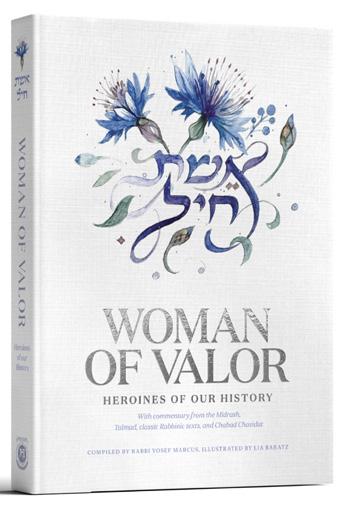
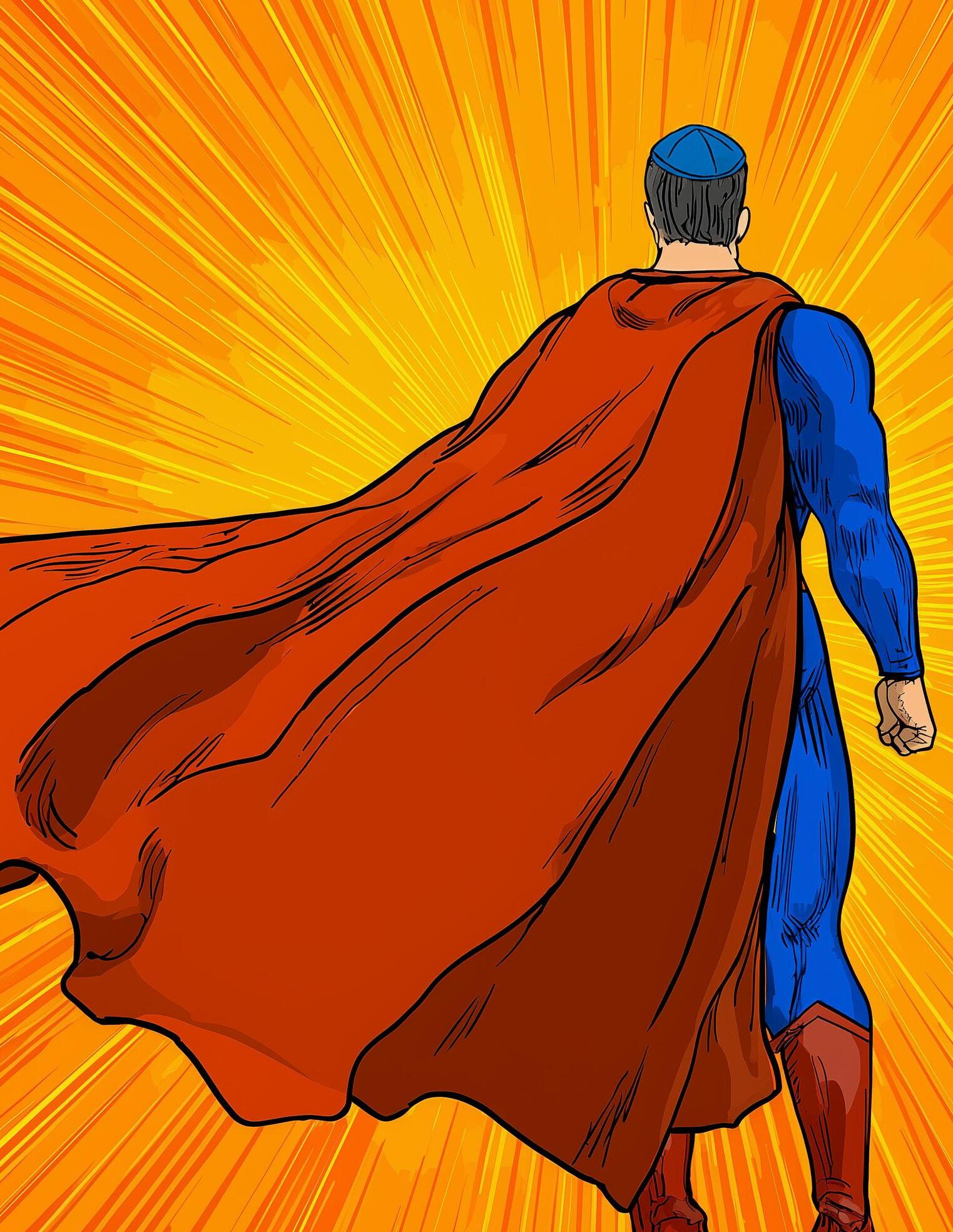
UP, UP AND AWARE WHAT SUPERMAN CAN TEACH US ABOUT OURSELVES
By Rabbi Simcha Weinstein
Growing up as a shy kid in Manchester, England, sometimes on the receiving end of antisemitic jabs, I found deep comfort in comic books. Superheroes weren’t just stories; they were allies. They embodied the push and pull so many Jews know well: straddling two identities, trying to fit in while staying true to who you are.
That’s precisely the story of Jerry Siegel and Joe Shuster, the Jewish teenagers from immigrant families who created Superman. Their Man of Steel was more than a power fantasy; he was an immigrant too, rocketed from Krypton to Earth, hiding in plain sight under the name Clark Kent. It’s an outsiderinsider tale that mirrors their own lives and the hopes of countless Jewish families, juggling Judaism at home with assimilation outside. In many ways, it also reflects an archetype: creators who hid parts of their own identity behind the power and invincibility of their superheroes — a metaphor that still resonates.
like identity, belonging, sacrifice, and shame, all wrapped up in colorful panels that make it easier to confront hard truths.
Superman’s disguise is Clark Kent, a slouched, nervous mask to help him blend into a world that doesn’t fully understand him, for many neurodivergent people or those wrestling with mental health challenges, that resonates deeply. We mask to meet expectations, often draining ourselves in the process.
NOW, AS A DAD TO A YOUNG ADULT ON THE AUTISM SPECTRUM AND A PERSON DIAGNOSED WITH ADHD AS AN ADULT, MY CONNECTION TO SUPERHEROES IS INTENSELY PERSONAL.
And then there’s Kryptonite. His greatest weakness isn’t just a clever plot device; it’s a reminder that even the strongest have vulnerabilities. So do we. Facing our own Kryptonite, anxiety, burnout, and grief often forges our greatest strengths. As Christopher Reeve said, “A hero is an ordinary individual who finds the strength to persevere and endure despite overwhelming obstacles.” No cape needed.
It’s wild to realize it’s been nearly two decades since my first book, Up, Up, and Oy Vey!, came out. The book explored how Jewish immigrants, balancing dual identities, gave us the superheroes we still love today. I’m finally working on a long-awaited sequel that dives even deeper: into superheroes and resiliency. I’ve learned in my community work, whether on the bimah or in peer support circles, that these stories aren’t just entertainment; they are powerful, teachable, tangible lessons.
Now, as a dad to a young adult on the autism spectrum and a person diagnosed with ADHD as an adult, my connection to superheroes is intensely personal. What began as private inspiration grew into something much larger. I’ve developed trainings, such as Mental Health Awareness Through Superheroes, which blend lived experience, geek culture, and evidence-based tools. Sharing this work at conferences, we’re all suiting up for our heroic journeys.
Psychologists like Dr. Janina Scarlet have shown how superhero stories can help people process trauma, anxiety, and depression. It’s no surprise that comics tackle heavy themes
Research supports this: reframing your struggles as chapters in a hero’s journey fosters emotional resilience. Cartoonist Jules Feiffer once said that Superman is different. Bruce Wayne becomes Batman. Peter Parker becomes SpiderMan. But Superman is Superman; Clark Kent is the disguise. It flips the script. He’s not hiding his powers; he’s hiding his tender need to belong, to be understood, to protect a world that sometimes wouldn’t defend him. That’s a profoundly Jewish narrative. It’s about living in two worlds, carrying resilience in one hand and vulnerability in the other, hoping no one sees just how fragile you are.
It’s no coincidence that Siegel and Shuster gave him the name Kal-El, then set him adrift in a basket-like rocket from a doomed world to a new land, echoing Moses among the reeds. Desperate parents launched both, both destined to rise up and protect their people.
May Superman remind us all that it’s okay to have Kryptonite. It doesn’t make us weak. It makes us beautifully, achingly human. •

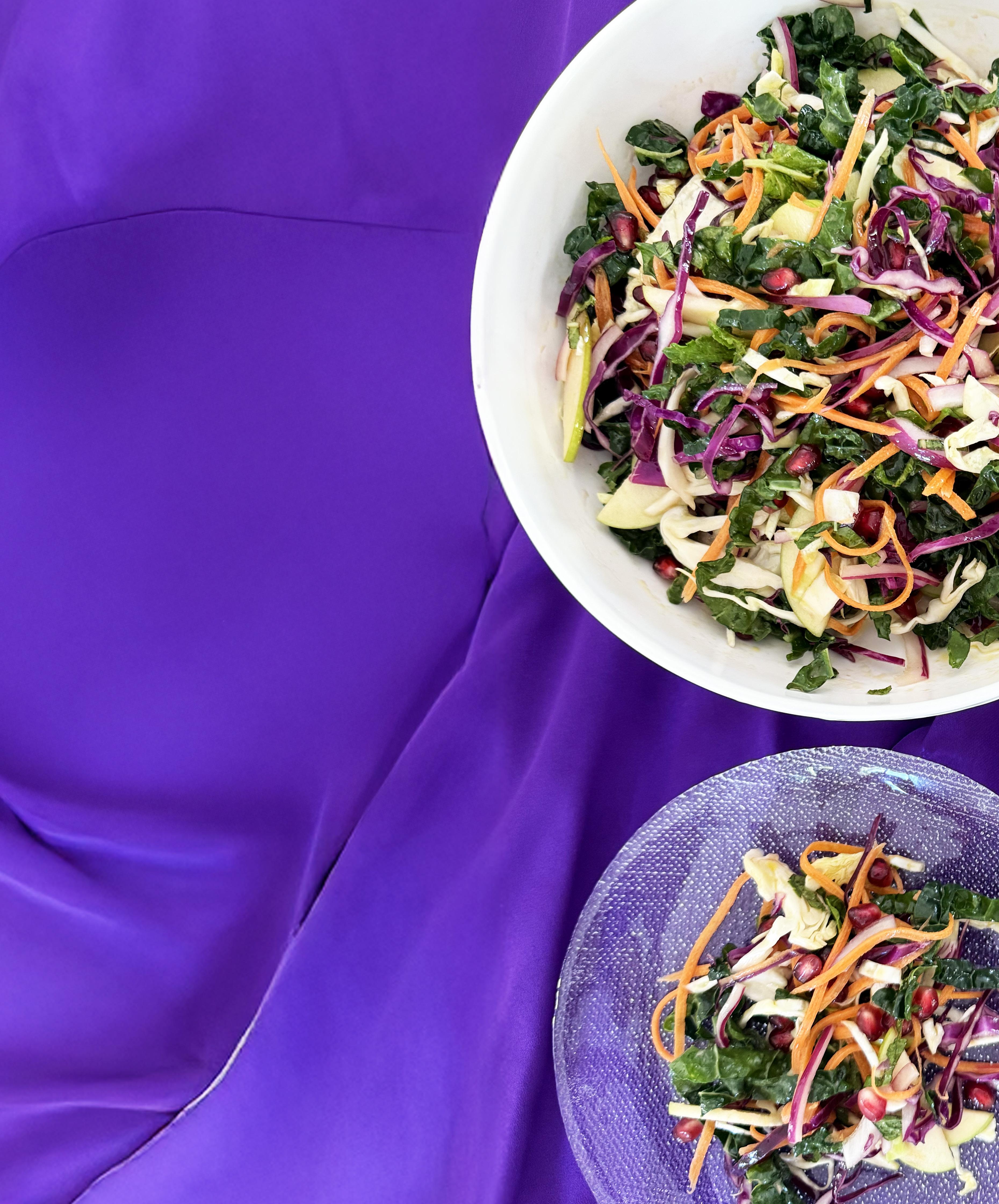
Rosh Hashanah Harvest Salad with
Apples, Honey & Pomegranate
This vibrant Rosh Hashanah salad combines crisp apples, sweet carrots, ruby-red pomegranate arils, kale, and crunchy cabbage, all tossed with fragrant mint and zesty red onion. Drizzled generously with honey, it’s a fresh and festive dish symbolizing sweetness and abundance for the new year.
10 SERVINGS
½ cup olive oil
¼ cup apple cider vinegar, plus 1 tablespoon
2 tablespoons Dijon mustard
2 tablespoons honey
1 teaspoon kosher salt
1 apple, sliced thin
2 cups kale, cup into ½ inch strips
2 cups green cabbage, shredded
2 cups red cabbage, shredded
1 cup julienned carrots (from 1 large carrot)
¼ red onion, thinly sliced
½ cup mint, chiffonade
1 cup pomegranate arils
DIRECTIONS:
1. In a small jar, combine ½ cup of olive oil, ¼ cup of apple cider vinegar, Dijon mustard, honey and salt in a jar. Shake well to emulsify the dressing.
2. In a large mixing bowl, place the apple slices and drizzle with additional tablespoon of apple cider vinegar and coat easy slice. This will stop the apple from oxidizing and turning brown.
3. In the same bowl, add kale, green cabbage, red cabbage, carrots, red onion, mint and pomegranate arils. Right before serving, pour dressing mixture over the vegetables, carefully folding everything together.
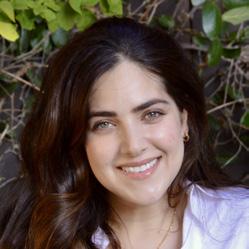
CHABAD OF YOUR TOWN
P.O BOX 3541
Yourtown, CA 94526
www.chabadofyourtown.com
candle lighting

Rosh Hashanah
Blessings 1&2
Wednesday, October 2
Light Candles at: 6:17 pm
Thursday, October 3
Light Candles after: 7:14 pm (from a pre-existing flame)
shabbat
Blessing 1
Friday, October 4
Light Candles at: 6:14 pm (from a pre-existing flame)
Yom Kippur
Blessings 1&2
Friday, October 11
Light Candles at: 6:02 pm
Sukkot
Blessings 1&2
Wednesday, October 16
Light Candles at: 5:55 pm
Thursday, October 17
Light Candles after: 6:52 pm (from a pre-existing flame)
shabbat
Blessing 1
Friday, October 18
Light Candles at: 5:52 pm (from a pre-existing flame)
Shemini Atzeret/ simchat torah
Blessings 1&2
Wednesday, October 23
Light Candles at: 5:45 pm
Thursday, October 24
Light Candles after: 6:43 pm (from a pre-existing flame)
shabbat
Blessing 1
Friday, October 25
Light Candles at: 5:42 pm (from a pre-existing flame)

Shana Tova
Bo-ruch a-toh Ado-noi E-lo-hei-nu me-lech ho-olom a-sher ki-de-sha-nu be-mitz-vosov ve-tzi-vo-nu le-had-lik ner shel...
Blessed are you, L-rd our G-d, King of the universe, who has sanctified us with His commandments, and has commanded us to kindle the light of...
SHABBAT: Sha-bos ko-desh ROSH HASHANAH: Yom Ha-zi-karon YOM KIPPUR: Shabbat v’Shel Yom haKippurim
FESTIVALS: Yom Tov
Bo-ruch a-toh Ado-noi E-lo-hei-nu me-lech ho-olom she-he-che-ya-nu vi-kee-yi-manu vi-hi-gee-an-u liz-man ha-zeh.
Blessed are you, L-rd our G-d, King of the universe, who has kept us alive and sustained us and let us reach this time.
